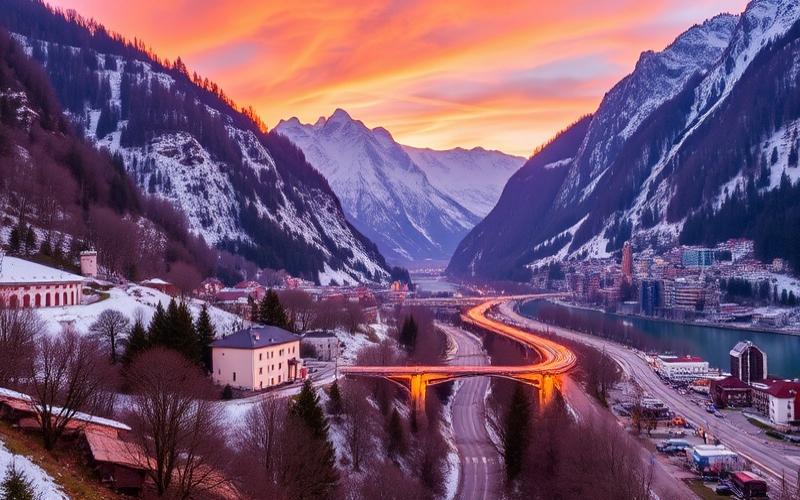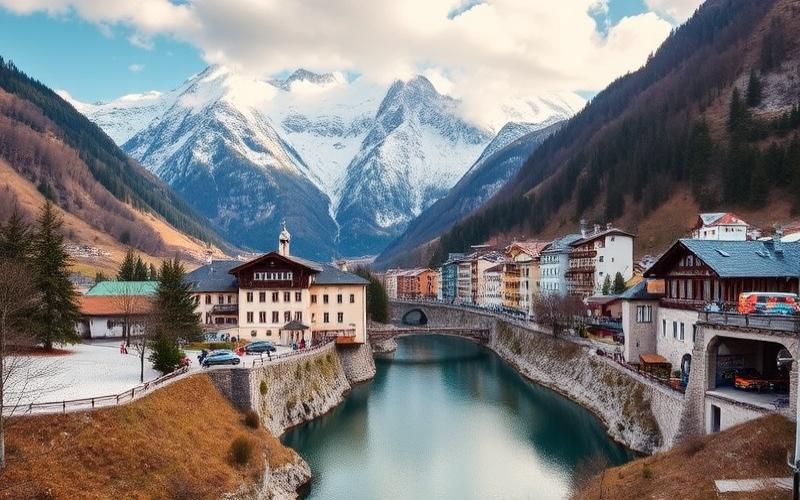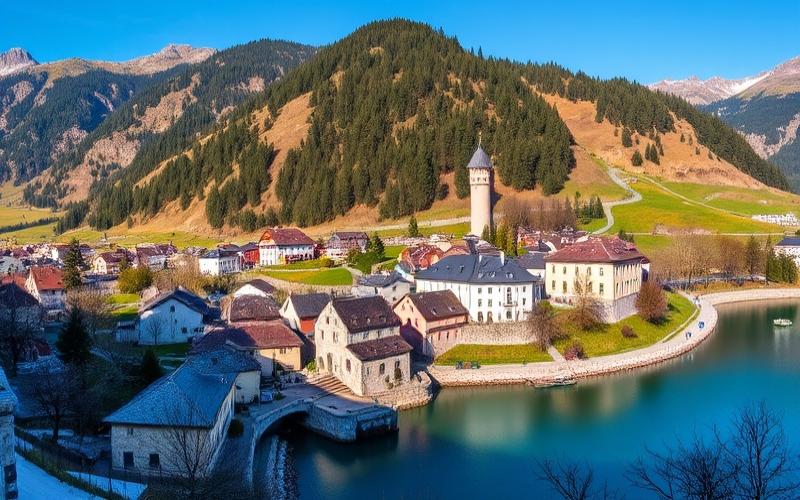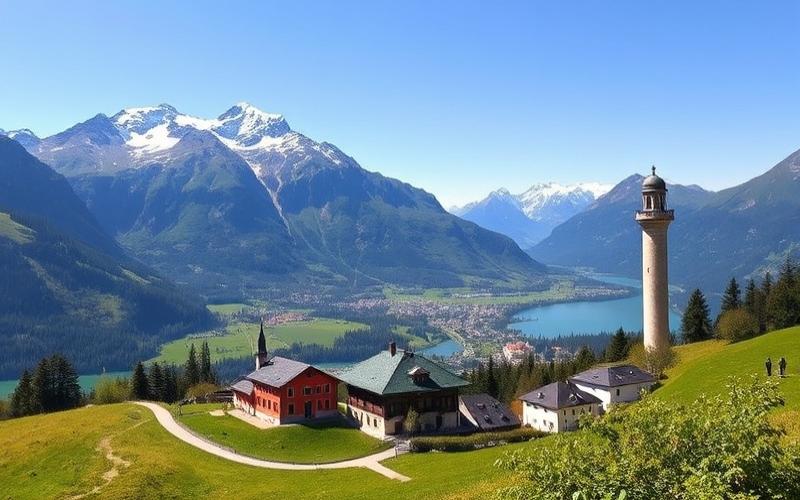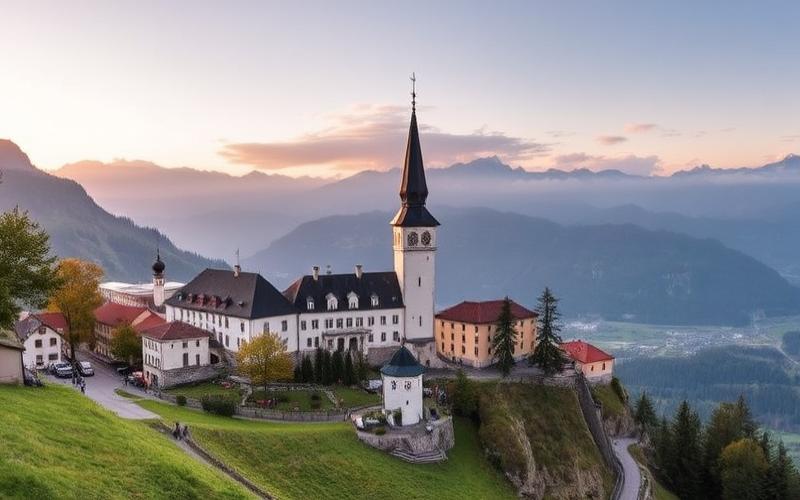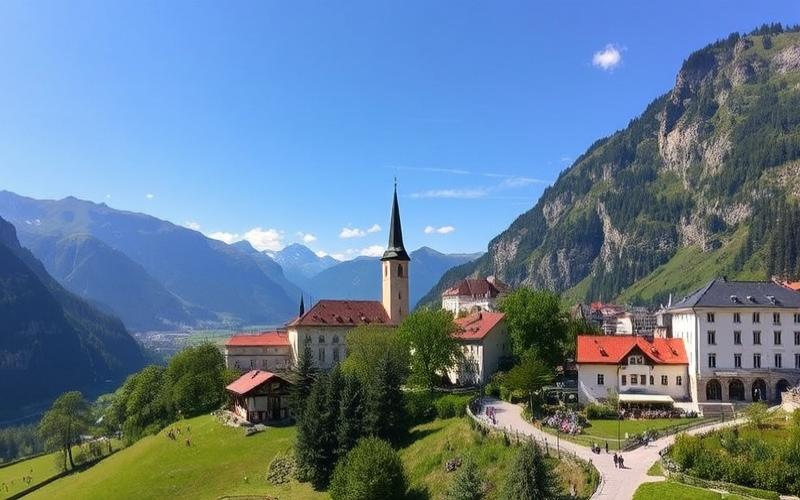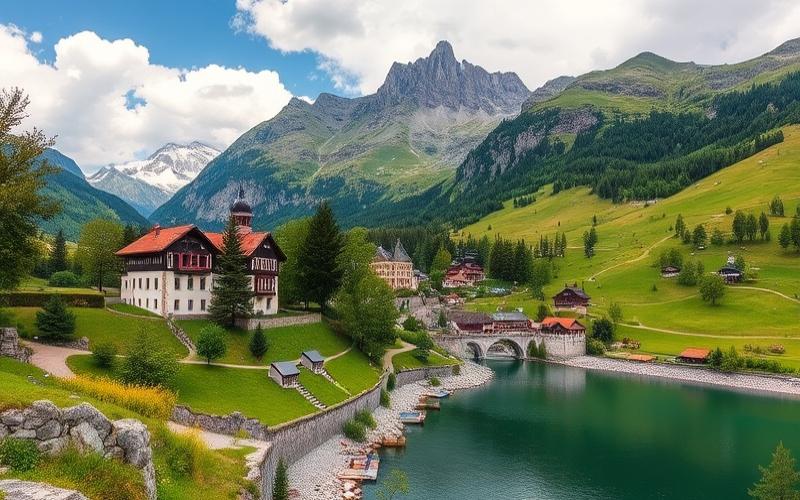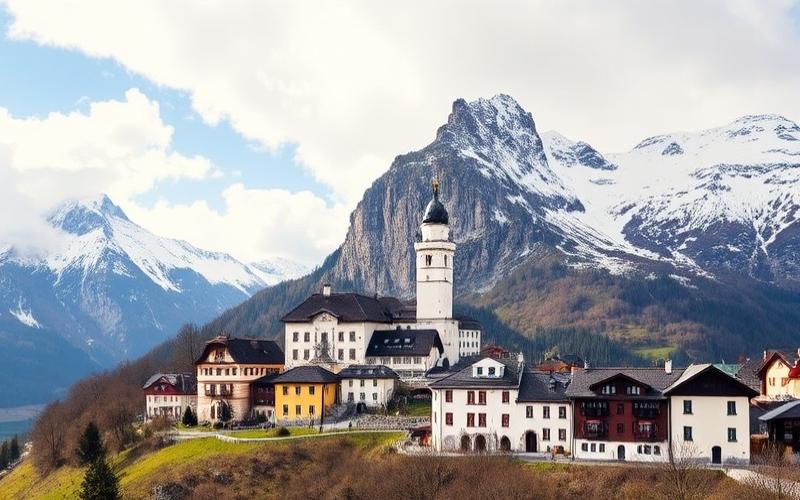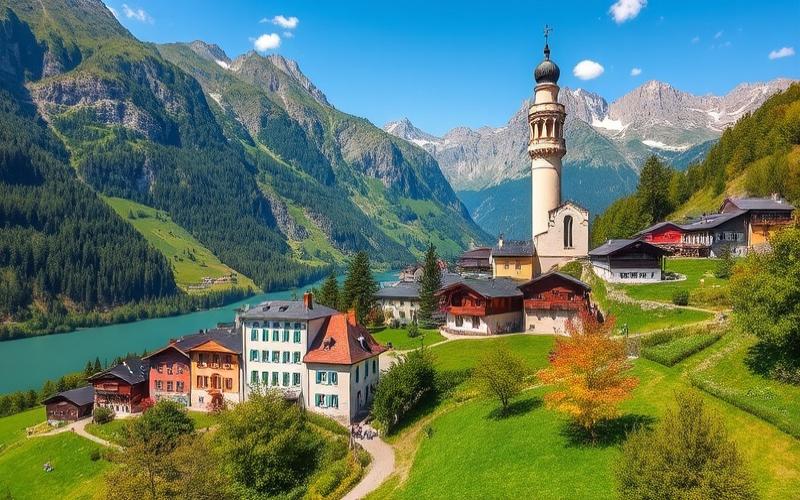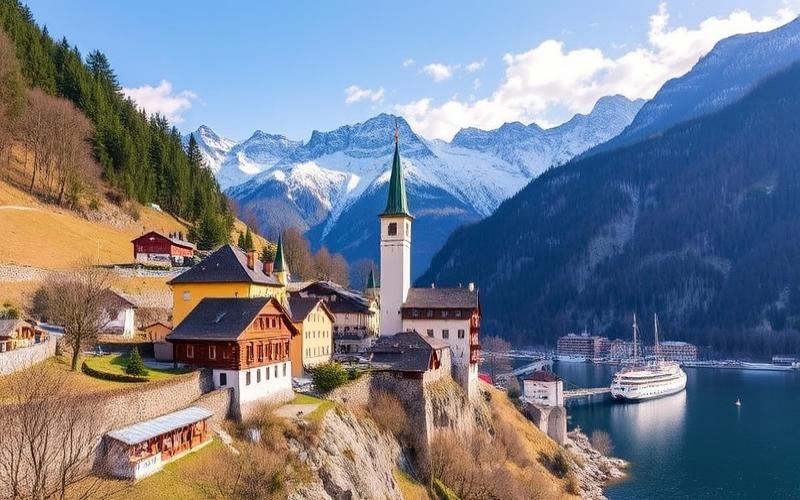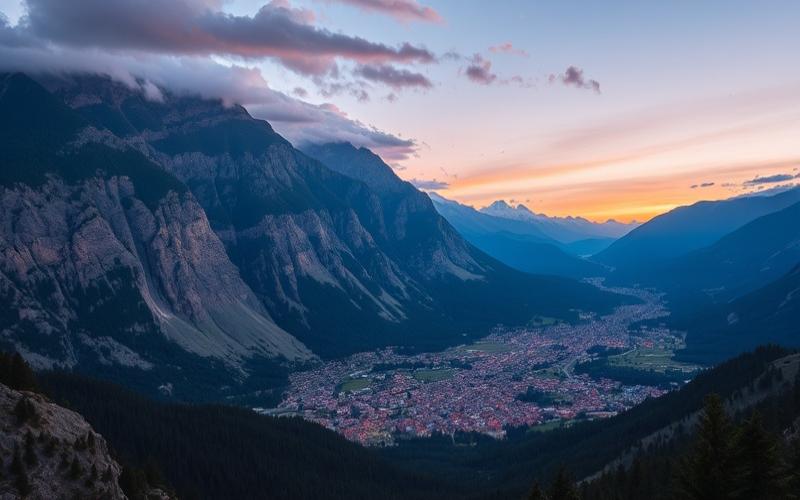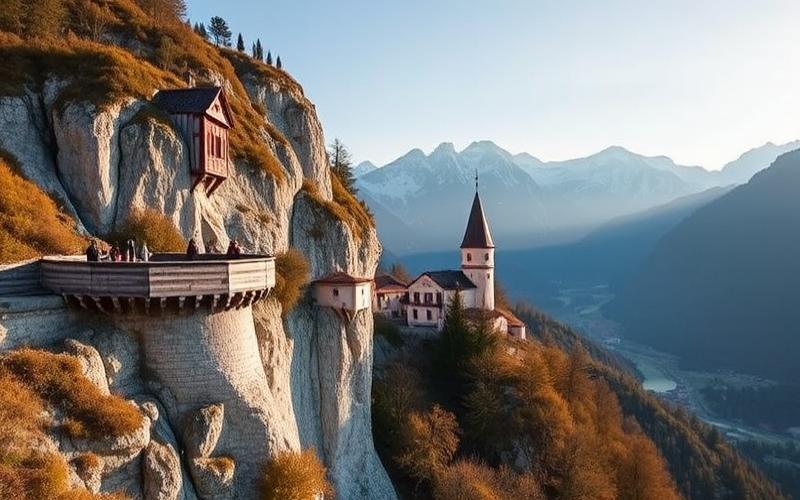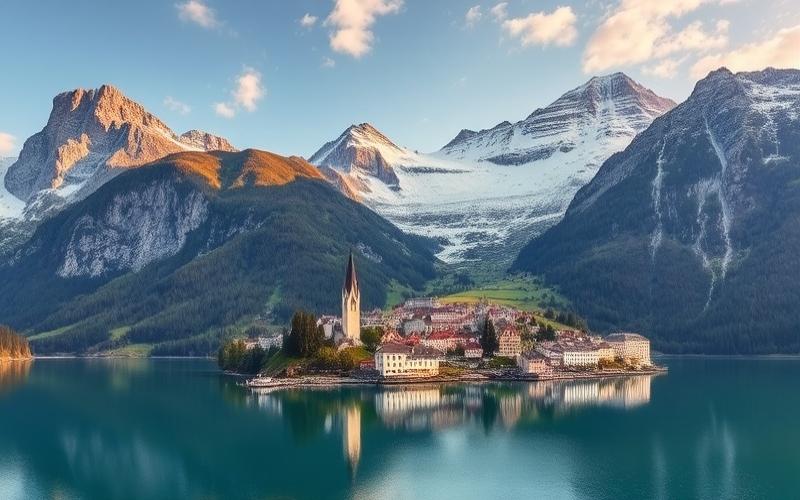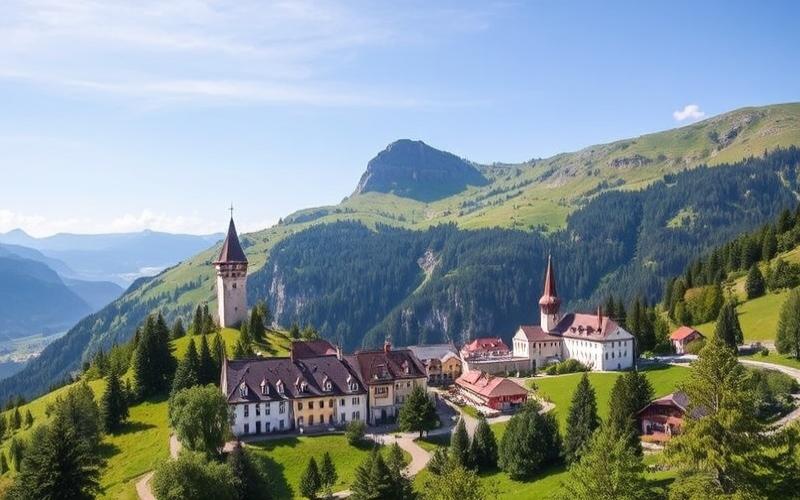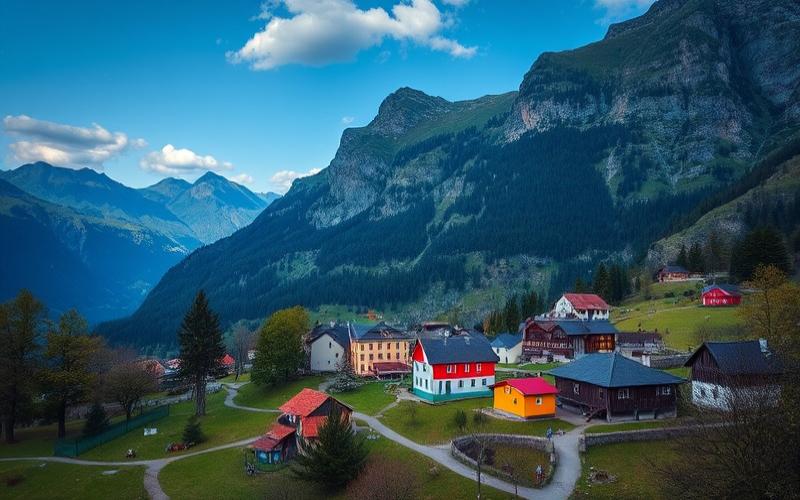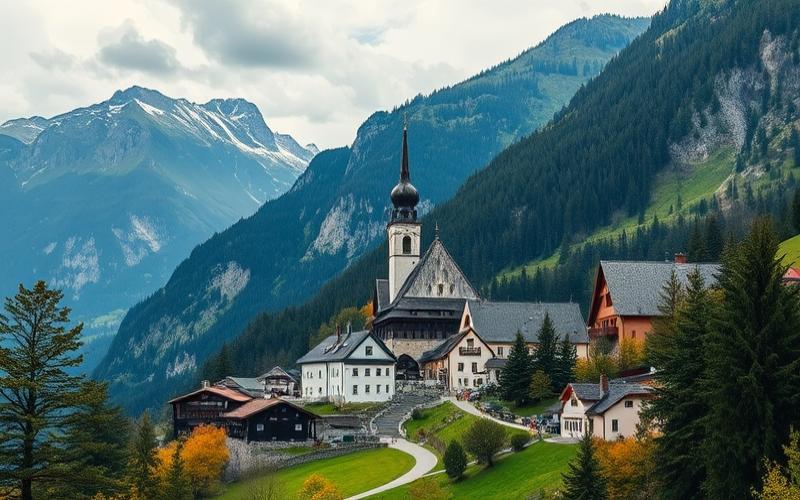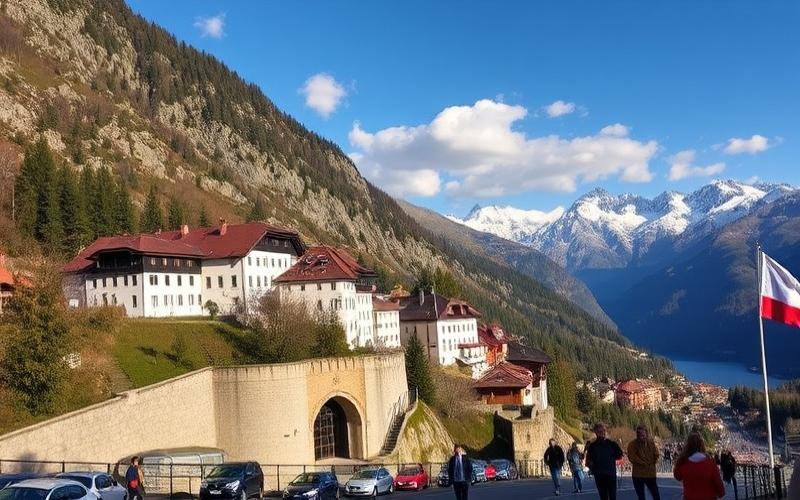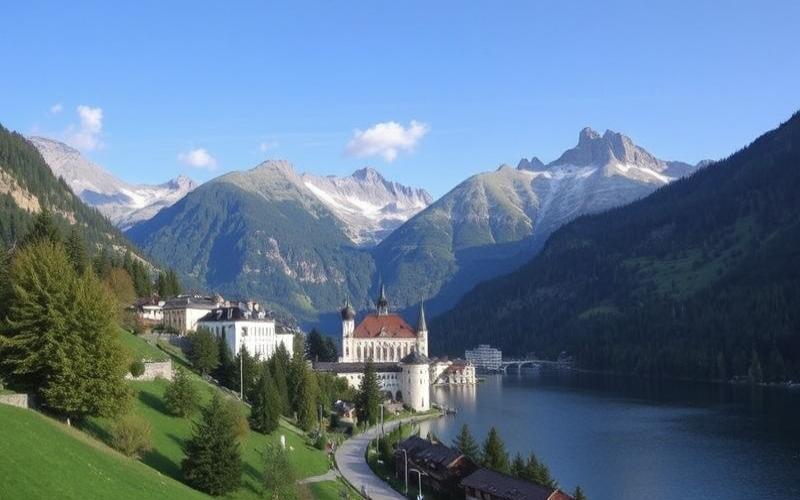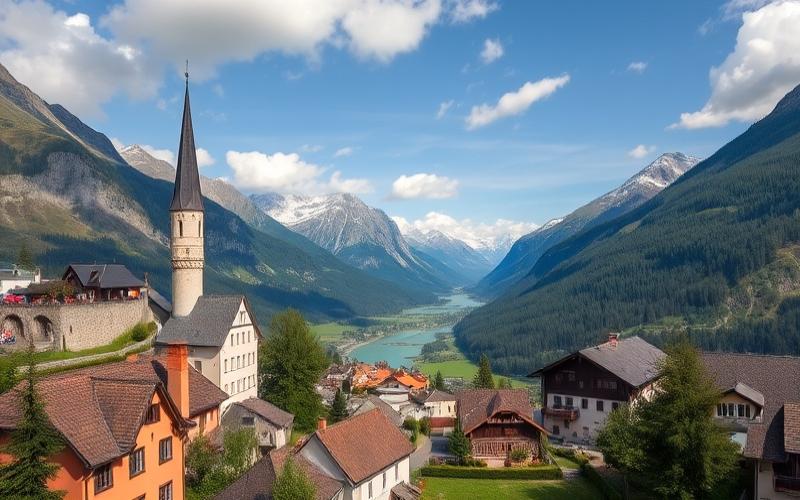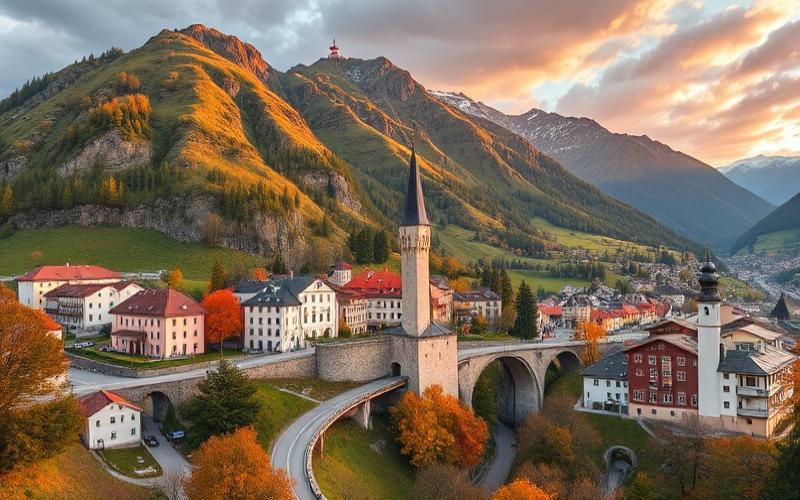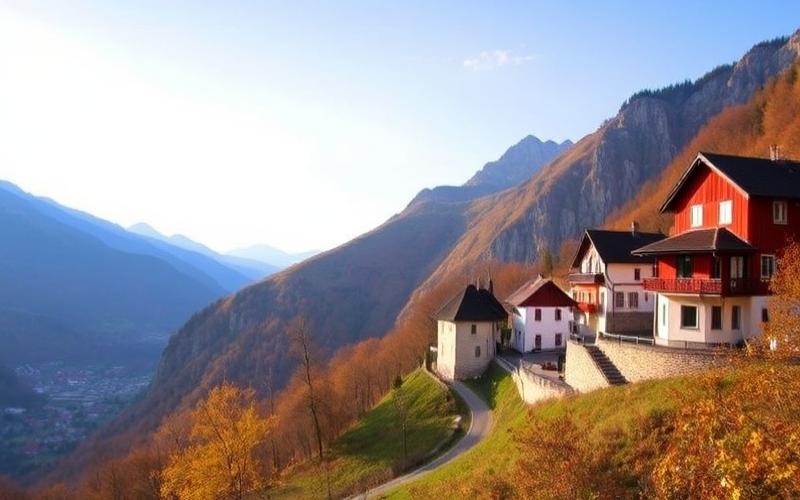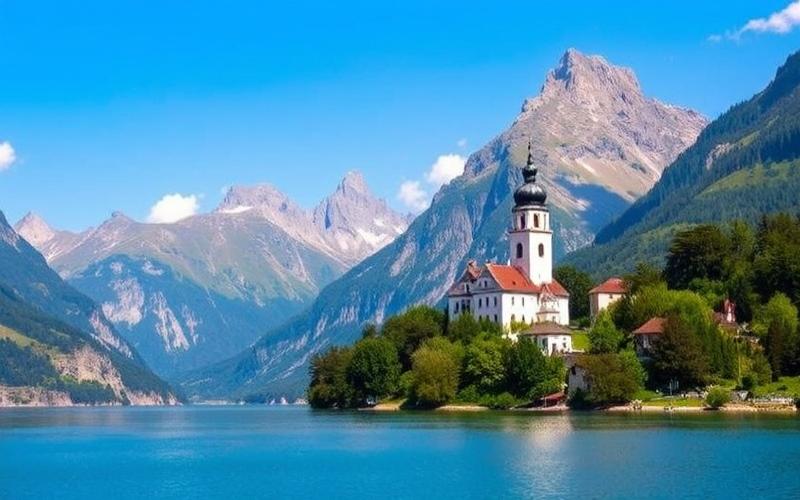
 Published on and written by Cyril Jarnias
Published on and written by Cyril Jarnias
Liechtenstein, a small landlocked country between Switzerland and Austria, captivates with its topographical diversity and picturesque charm. Despite its limited area of just 160 square kilometers, this Alpine gem harbors numerous natural wonders, from lush valleys to the snow-capped peaks of the Rhaetian Alps.
Traversed by the Rhine River, its natural western border, the country features varied terrain with postcard-worthy landscapes. This unique geography influences not only Liechtenstein’s climate and ecosystem but also its economic infrastructure and cultural ties with its neighbors.
Geographical Location and Neighboring Countries
Liechtenstein is a microstate located in Central Europe, precisely between Switzerland to the west and Austria to the east. It spans an area of 160 km² (some sources mention 160.5 km²), placing it among the world’s smallest countries, comparable in size to Washington D.C.
Borders and Neighboring Countries
| Direction | Neighboring Country | Approximate Border Length |
| West | Switzerland | 41 km |
| East | Austria | 34 km |
Main Geographical Features
- Precise geographical position: approximate coordinates 47°16′ N, 9°32′ E.
- Terrain: The territory is predominantly mountainous (Eastern Alps), with an alluvial valley occupied by the Rhine in its western part.
- Topography:
- Approximately the western third of the country corresponds to the Rhine alluvial plain.
- The remaining two-thirds are dominated by steep Alpine massifs.
- Highest point: Vorder-Grauspitz (2,599 m).
- Lowest point: Ruggeller Riet (430 m).
- Main river: The Rhine flows through the country from south to north, marking the natural border with Switzerland along its entire western length.
The capital Vaduz is located in the central western part of the country, near the right bank of the Rhine and thus close to the Swiss border. It occupies a central position within a relatively flat area but is surrounded by the Alpine reliefs that characterize most of Liechtenstein’s territory.
Good to know:
Liechtenstein is a Central European microstate, landlocked between Switzerland to the west and south and Austria to the east and north. With an area of only 160 km², it is one of the world’s smallest states. Its territory is dominated by the Rhaetian Alps, offering mountainous topography conducive to spectacular landscapes, and the Rhine River which naturally traces its western border. The capital, Vaduz, is located on the right bank of the Rhine, near the Swiss border, and serves as the country’s administrative and economic center. Despite its small size, Liechtenstein is perfectly integrated into the Alpine region, offering various outdoor activities, and benefits from its strategic position in the heart of Europe for trade and tourism.
Main Regions of Liechtenstein
Liechtenstein is divided into eleven municipalities, each with its distinct geographical and cultural characteristics. The municipalities are distributed between two main regions: Unterland (Lowlands) and Oberland (Highlands).
Municipality Characteristics
- Vaduz: The capital of Liechtenstein, Vaduz is also an important municipality with a rich history and unique architecture. It is home to Vaduz Castle, a symbol of the principality. Vaduz is located in the Oberland.
- Schaan: This is the largest municipality by population. It is also located in the Oberland and is known for its economic dynamism and proximity to Switzerland.
List of Liechtenstein Municipalities:
- Unterland:
- Ruggell
- Schellenberg
- Gamprin
- Eschen
- Mauren
- Oberland:
- Schaan
- Planken
- Vaduz
- Triesenberg
- Triesen
- Balzers
Geographical Features
Liechtenstein is predominantly mountainous, with varied landscapes ranging from valleys to Alpine mountains. The topography is marked by high altitudes, with peaks like Grauspitz, the country’s highest point. The municipalities are often scattered, with some having exclaves or enclaves, making their geographical shape complex.
Cultural and Economic Differences
Liechtenstein’s municipalities share a common culture, but economic differences exist. The Oberland, where Vaduz is located, is more focused on administration and finance, while the Unterland has a more diversified economy. Local festivals and traditions also vary between municipalities.
Demographics
Liechtenstein’s population is approximately 38,000 inhabitants, with uneven distribution among municipalities. Schaan is the most populous, while Planken is the least populous.
Accessibility and Infrastructure
Liechtenstein is well-connected by road and has an efficient public transport network. Municipalities are linked by roads and buses, facilitating access to tourist sites.
Tourist Sites
Each municipality offers unique points of interest:
- Vaduz: Vaduz Castle, national museum.
- Schaan: Parish church, vibrant nightlife.
- Balzers: Gutenberg Castle.
- Triesenberg: Traditional village with typical houses.
These sites, along with the natural beauty of the surrounding mountains, attract many tourists each year.
Tourist Infrastructure
The municipalities have well-developed tourist infrastructure, including hotels, restaurants, and outdoor activities like skiing and hiking.
Good to know:
Liechtenstein is divided into eleven municipalities, with Vaduz as the capital housing the seat of government and key administrative structures, while Schaan, the largest municipality by population, plays an important economic role with its developed infrastructure and practical access. Vaduz, nestled at the foot of the Alps, is renowned for its mountain landscapes and historical sites, such as Vaduz Castle and the Liechtenstein Art Museum. Schaan is characterized by a varied mix of industries and traditions, and stands out with its more hilly topography facilitating agricultural activities. Other municipalities, like Balzers with its medieval castle and Triesenberg, known for its Walser traditions and charming Alpine villages, each display distinct cultural nuances and unique tourist attractions. Modern infrastructure, such as the efficient road network and well-maintained bike paths, allows easy mobility between these regions, thereby promoting enhanced economic dynamism and valuable interconnectivity for visitors seeking to explore Liechtenstein’s diverse natural and cultural treasures.
Main Cities and Largest City
Liechtenstein is a small European country divided into eleven municipalities, each playing a distinct role in the urban landscape. The cities are generally small, with a high concentration of population in a few large municipalities.
General Overview of the Urban Landscape
Liechtenstein’s urban landscape is characterized by green hills and picturesque valleys, with mountains forming a majestic natural backdrop. The cities are often located in valleys or on hillsides, giving them a picturesque appearance that harmonizes with the natural environment.
Main Cities
Vaduz, the Capital
Vaduz is the political and cultural capital of Liechtenstein, with a population of approximately 5,800 inhabitants. It is an important center for tourism, thanks to its museums, art galleries, and government facilities. The city also attracts with its elegant lifestyle and well-maintained urban environment.
Schaan, the Largest Municipality
Schaan is the most populous municipality in Liechtenstein, with approximately 6,100 inhabitants. It plays a crucial economic role as an industrial center and transportation hub. Its proximity to Vaduz makes it particularly attractive to businesses and residents.
Balzers and Eschen
- Balzers is known for its medieval castle and preserved natural environment. It attracts tourists interested in history and nature.
- Eschen is a town located in the northern part of the country and is recognized for its dynamic community life and local cultural events.
Geographical Distribution and Relations Between Cities
Liechtenstein’s cities are closely linked by their geographical proximity and economic interdependence. Here is an overview of their distribution and characteristics:
| City | Approximate Population | Characteristics |
|---|---|---|
| Vaduz | 5,800 | Political and cultural capital, tourism |
| Schaan | 6,100 | Industrial and economic center, transportation hub |
| Balzers | 4,589 | Medieval castle, natural environment |
| Eschen | 5,532 | Dynamic community life, cultural events |
The relationships between these cities are marked by strong cooperation, both economically and culturally. Together they contribute to the richness and diversity of Liechtenstein’s urban landscape.
Good to know:
Liechtenstein is composed of 11 municipalities, each with its own charm and unique role. Vaduz, the capital, is not only the political and cultural center with approximately 5,700 inhabitants but also a popular destination for its tourist sites and government institutions. Schaan, although the largest municipality in terms of population with about 6,000 residents, stands out for its economic dynamism, hosting numerous businesses and being located in immediate proximity to Vaduz. Balzers and Eschen are also notable towns: Balzers is known for its Gutenberg Castle, while Eschen plays an important role in local administration. The geographical distribution of these towns reflects a harmonious combination of the country’s compact urban structures, highlighting the proximity and interconnection between urban centers.
Disclaimer: The information provided on this website is for informational purposes only and does not constitute financial, legal, or professional advice. We encourage you to consult qualified experts before making any investment, real estate, or expatriation decisions. Although we strive to maintain up-to-date and accurate information, we do not guarantee the completeness, accuracy, or timeliness of the proposed content. As investment and expatriation involve risks, we disclaim any liability for potential losses or damages arising from the use of this site. Your use of this site confirms your acceptance of these terms and your understanding of the associated risks.

